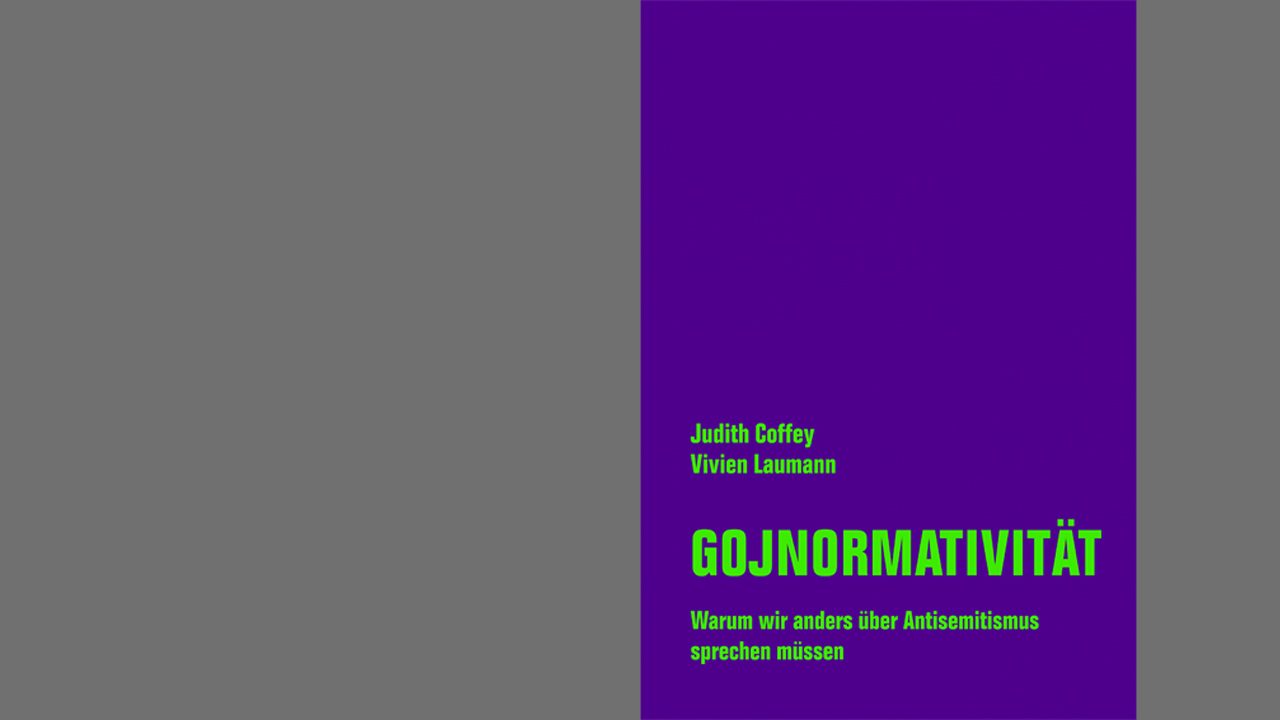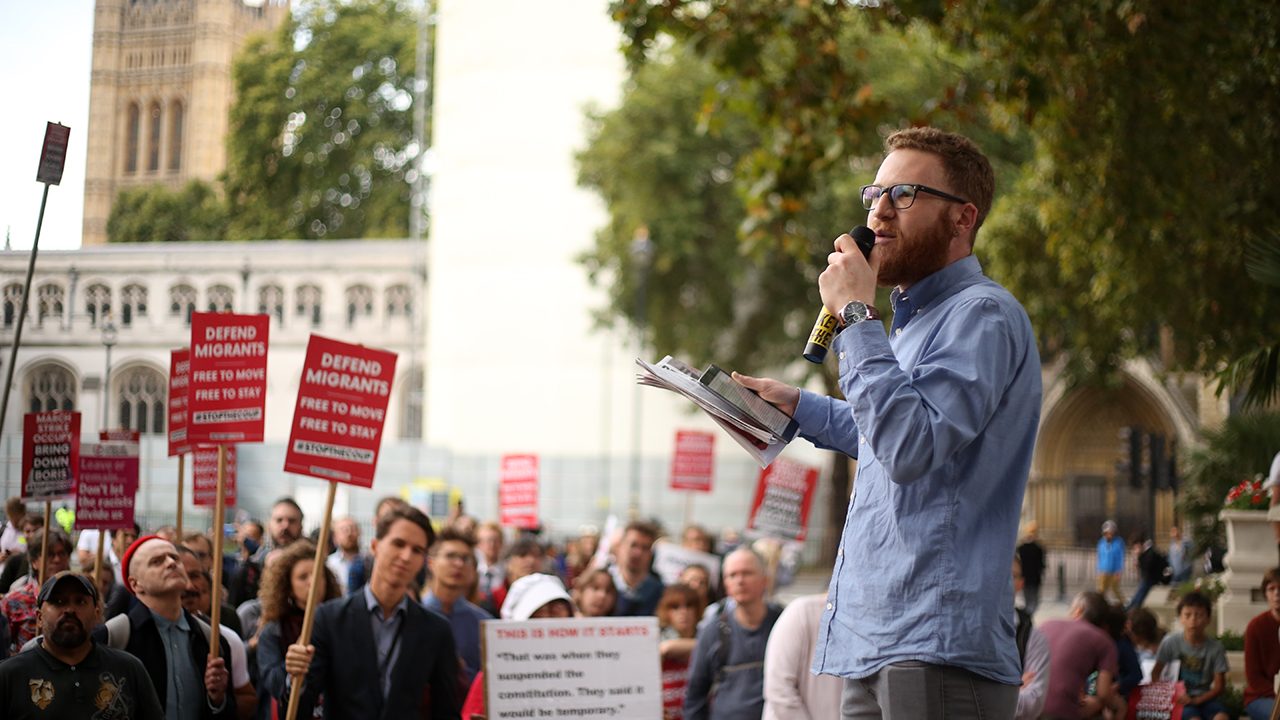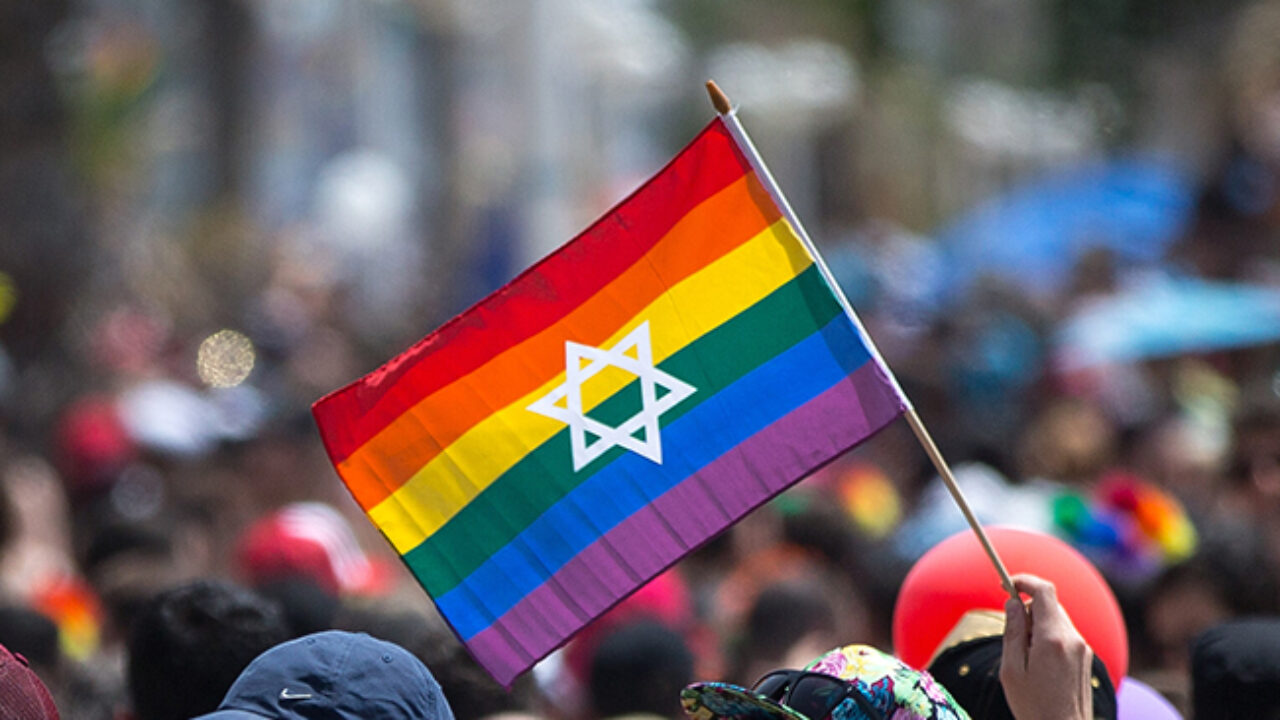
This interview was originally published in German.
Belltower.News: What is the state of fighting antisemitism in Germany?
Judith Coffey: Combating antisemitism in Germany supposedly gets much more attention than other forms of discrimination. That is only true on the surface. Even though it seems that antisemitism is strongly condemned and thematised, this doesn’t mean that there is in practice a real reflection on antisemitic structures or that those affected by antisemitism are visible.
Goynormativity is an activist book and you yourselves are also active in queer-feminist groups. How do you perceive the debate around antisemitism within the movement?
Vivien Laumann: In the queer-feminist movement, we have seen on the one hand a non-perception of antisemitism as a current form of discrimination and, on the other hand, an undifferentiated, one-dimensional thematisation of the topic in connection with Israel and Palestine. This can be seen in Berlin, for example, at various queer marches. Also in the broader left-wing scene, antisemitism is often not negotiated as a current phenomenon or concrete threat, but rather relegated solely to the past.
Judith Coffey: This absence can be seen, for example, in the fact that in leftist spaces antisemitism is usually omitted when listing undesirable forms of behaviour such as sexism, racism or transphobia. Or by the fact that you never see an encouragement for Jews to apply in job advertisements, even if other marginalised people are directly addressed. This de-naming makes those affected by antisemitism invisible. When even political allies don’t perceive antisemitism as a problem, it results in making those affected by antisemitism doubt their own perceptions. This is a dangerous mechanism.
You use “Goy” to dismantle the supposed opposition between “Jewish” and “German”. What advantages does the term offer?
Vivien Laumann: We don’t find the separation between Jewish and German useful, because there are also Jewish Germans or German Jews, and Jews are always portrayed as foreigners by using this binary pair. The advantage of the term Goy is that it describes nothing other than that which is not Jewish. It allows a greater differentiation of identity. A person can be described as Jewish or goyish and additionally have other elements of identity.
Judith Coffey: Another reason is that it is empowering to apply the Jewish label for “foreign peoples” to the non-Jewish majority. It shifts the focus of naming. Also, there’s a parallel with the Romani term “gadje”. This opens the potential for solidarity between Jews and the Roma community.
So what is Goynormativity?
Judith Coffey: Gojnormativity is the gentile norm as a social structure. The term is analogous to heteronormativity. It is about describing social processes of othering Jews. This is because “non-Jewishness” is seen self-evident and normal, as something which is not questioned. This is a mechanism that can be described for all power relations. For example, Critical Whiteness as a term describes a similar form of relationship to whiteness, which also remains unquestioned as it is seen as supposedly “normal”. Such a concept is also needed in relation to antisemitism.
After reading your book, we already noticed situations in which we thought, ah, yes, that is “goynormative”. With this term, an abstract theoretical construct suddenly becomes tangible and also makes us more aware of the perception of antisemitism. Is the term an invention of yours?
Vivien Laumann: Yes, we came up with the term. If the terms for something are missing, the analysis for it is missing to, and so is the language to make such mechanisms nameable. But that doesn’t mean that all goynormative mechanisms are antisemitic. Christmas, for example, is a very gojnormative time of year. However, it is not automatically antisemitic if Christmas is unquestioningly set as a cultural norm.
You’ve coined the term Goynormativity analogously to terms of analysis for other power relations. At the same time, antisemitism differs from other forms of discrimination. What do these differences look like?
Judith Coffey: Each power relation has specific structures and mechanisms and must therefore be considered separately. But in the political contexts in which we want to intervene, this often does not happen with regard to antisemitism. And we do not think it makes political sense to subsume antisemitism under the category of racism.
Why not?
Judith Coffey: Primarily because it makes Jews invisible. There are certainly Jews who are affected by racism, but primarily people don’t think of Jews when thinking of racism. That’s what we are talking about when saying people are made invisible. There are also a number of analytical points that distinguish antisemitism from racism. Not all forms of antisemitism can be conceptually subsumed under one definition of racism. For us, however, it is primarily a political argument: we will not get anywhere if we conflate antisemitism and racism. We have to look at both phenomena separately, but also in their interconnectedness. Only in this way we can look at the effects on those affected.
Let’s talk about how Jews are made invisible in theory. Are Jews white or are they not?
Vivien Laumann: There are debates about this question. Often Jews are simply classified as white. That doesn’t go far enough, because being white also means belonging to the majority society and being unmarked. This may apply to certain Jews in many everyday situations. But being white also means experiencing oneself as a self-evident part of a dominant majority, and this does not usually apply to Jews. Describing Jews as white and thus privileged simply does not work in most parts of the world, and it certainly does not work in Germany.
How can you respond to this problem?
Vivien Laumann: We plead for a stronger integration of the pair of terms Goy versus Jew, because we won’t get anywhere with the confrontation of white versus people of colour and/or Black at this point. There are Jews who are people of colour and/or Black. But even Jews who are white in the sense of being outwardly unmarked are still not privileged in this society. The attribution of being white to Jews not only implies unmarkedness and privilege, it is also linked to specific antisemitic images: Jews are imagined as invisible and acting in secret.
Judith Coffey: The question of whether Jews are white is actually impossible to answer. There is a lack of differentiation. That’s exactly why other terms are needed. We are both perceived as white in everyday life, and with that comes certain privileges that need to be named. That’s why we try to make both aspects nameable. The terms goyish/Jewish make it possible to say: I am white and Jewish – or not.
You write that there is a void in intersectionality debates when it comes to antisemitism. Why are Jews so excluded from German discourse on intersectionality?
Vivien Laumann: On the one hand, the concept of intersectionality was developed for a specific situation in the USA, where it was about race, class and gender. The concept was adopted without adapting it to the context in Germany. It is difficult to accommodate antisemitism within these categories because being Jewish is neither exclusively nor unambiguously a religion, nor can it be understood as race or ethnicity.
Judith Coffey: The failure to name antisemitism in intersectionality theories is not only a problem in Germany. In the U.S., criticism of this fact from a Jewish perspective has also become louder in recent years. At the same time, however, the question arises whether these discourses need to be negotiated within the concept of intersectionality at all. There is also the understandable demand that the concept, which was developed primarily by Black women, should retain a focus on this group. It only becomes problematic when the concept of intersectionality is expanded to include a number of categories and only antisemitism is excluded.
Your book addresses leftists from different spectrums. But you also repeatedly refer to concepts of Critical Whiteness, which are sharply criticised, especially by elements of the German left. How do you think your concept can avoid fetishising the person speaking? In your opinion, how important is the perspective of those affected by antisemitism?
Vivien Laumann: It is important to include Jewish perspectives on antisemitism more often. At the same time, of course, not everything that Jews say is automatically correct. In our view, the audible criticism of identity politics from the left condemns these concepts too sweepingly. We too have criticisms of the implementation of certain approaches, but it is nevertheless important to balance the tensions and dilemmas in which we find ourselves. Resolving contradictory relationships has to be a two-way street.
Judith Coffey: We’re trying to promote tolerating more contradictions. We have to accept that it’s true the social positioning of who is speaking makes a difference, but also that identity categories are always generalisations and that a particular experience does not automatically result in a specific political analysis. A generalised criticism of identity politics assumes a simplified and homogenised picture of different approaches that are subsumed under identity politics: from feminism to queer politics to anti-racism. This approach isn’t analytical and also lacks solidarity.
What role does the German culture of remembrance play in the perception of Jews today?
Vivien Laumann: The topic of the Shoah, National Socialism and remembrance is still the decisive thematic field in which Jews are perceived: Jews are seen either as dead or in the role of contemporary witnesses. Contemporary Judaism has little place here.
What role do Jews play in the German politics of remembrance? Is it not goynormative to pretend that the German culture of remembrance was established by German goyim alone? In the history of the reappraisal of National Socialism in Germany, it was all too often Jews who were the driving force behind the reassessing the past, often going against the goyish German mainstream society.
Vivien Laumann: Exactly. This fact gets lost because the status quo of German remembrance is considered a goyish German merit. Yet the current state of reappraisal exists because it was fought hard for, especially by Jews, and met with resistance.
Judith Coffey: The achievements of the culture of remembrance were, in a sense, appropriated. But one must certainly also distinguish between a left-wing politics of remembrance, which was involved in fighting for remembrance with goyish and Jewish actors, and ritualised, state-supporting forms of remembrance.
What would you wish for in left-wing politics of remembrance?
Judith Coffey: We would like to see goyish actors in the left politics of remembrance reflect on their own positioning, especially with regards to their family biography. This relates to both emotional and material legacies as well as how they are dealt with. Returning to identity politics: We would wish for transparency about whom is speaking and their individual position. Goyish actors should not speak about the Shoah as if they had no affective entanglement in the sense of personal involvement. We criticise a supposedly objective position and the disconnection from the feelings associated with it. And of course, you also have to reflect on your own goynormative practices of remembrance.
Finally, you call for new alliances in which antisemitism and other power relations are fought together. Do you have positive examples of such alliances?
Judith Coffey: On a small scale, there are certainly many positive examples of such alliances. There have been long and commendable attempts to build such alliances. We describe some in our book.
Vivien Laumann: The Festival of Resilience, initiated by survivors of the antisemitic attack in Halle (Saale), is a positive example. It links those affected by various right-wing terrorist attacks. It brought together the survivors of Halle, for example, with the relatives of the victims of the racist attacks in Hanau and Mölln. In all too many alliances, it is a problem that issues are played off against each other or some topics just get excluded. It would also be desirable to have alliances in which conflict-laden issues, such as the Israel-Palestine conflict, can be discussed constructively.
Debates on how to approach antisemitism and anti-racism together often focus on the position on Israel and Israel-related antisemitism. How can antisemitism and racism be approached together if one does not want to and cannot exclude Israel?
Vivien Laumann: At first, the question seems irresolvable. But why shouldn’t that be possible? Why is it always somehow linked to Israel when it comes to antisemitism here in Germany? Why do alliances in Berlin, which actually deal with concrete conditions in Berlin, escalate over this question?
Judith Coffey: It would be good if the Middle East conflict could be excluded when it is not the actual topic. But what can’t be left out is the antisemitism that is attached to it. At a certain point, I personally also draw a line for alliances in which I myself am involved in. If there is no willingness to deal with antisemitism, I don’t want to be part of that alliance. Because anything else leads to a trivialisation that I no longer want to endure. I have tried it often enough and I don’t want to put up with it anymore.


